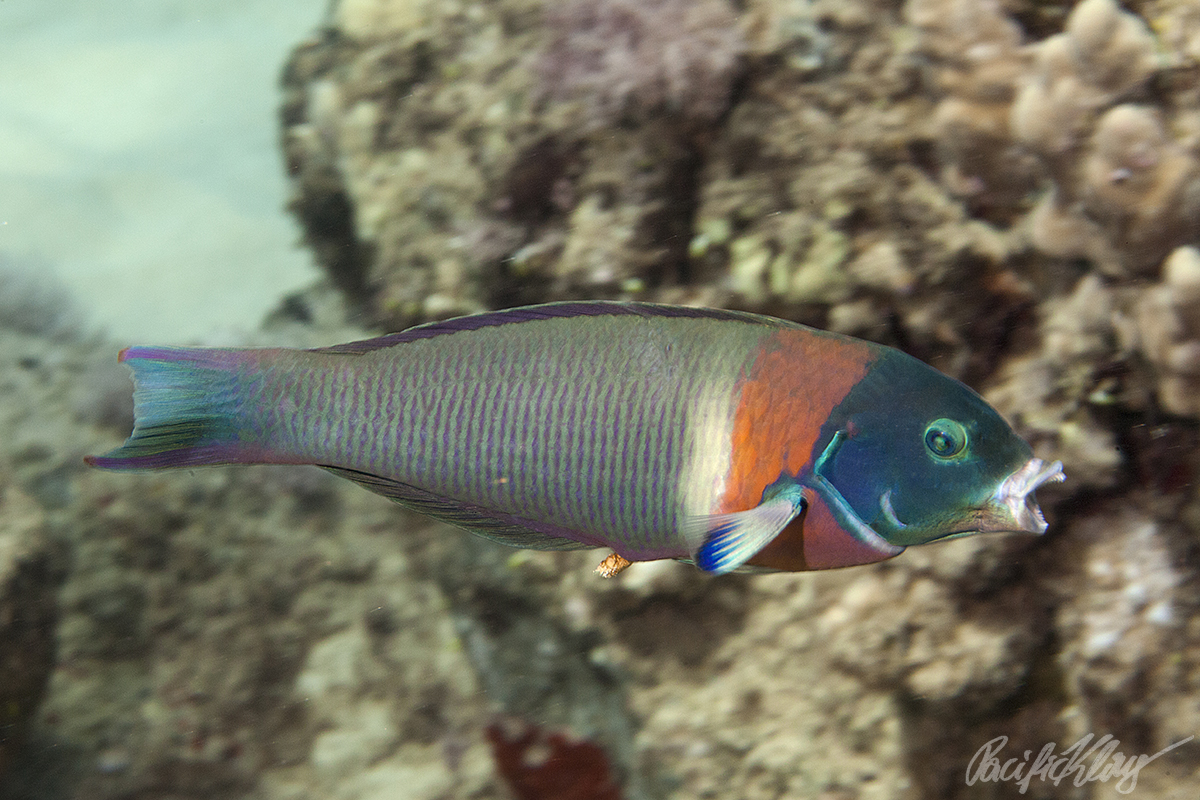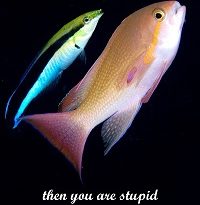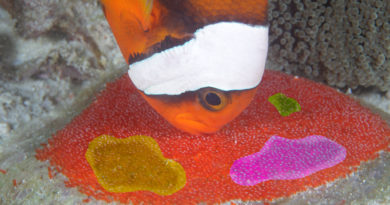The Battle of the Hawaiian Islands
Folks think all is all paradisiacal and lovely in Hawaii. Also underwater, so the story goes, all the fish are having fun and are enjoying the warm water and the great visibility. The take a bite from a coral here, and eat a worm there, and everyone is happy, supposedly.
In reality, a harsh battle is raging underwater between a damselfish, the Hawaiian Sergeant (Abudefduf abdominalis) and a number of fishes which really like to eat the Sergeant’s eggs. The Sergeants stick their fertilized eggs onto rock surfaces, and guard them feistily. Any approaching fish they ram with all they have. It’s quite a spectacle! This must have been going on for millions of years, since the Sergeant nesting behavior evolved. The Sergeants are so aggressive that they usually keep all would-bee egg eaters away from their nests.
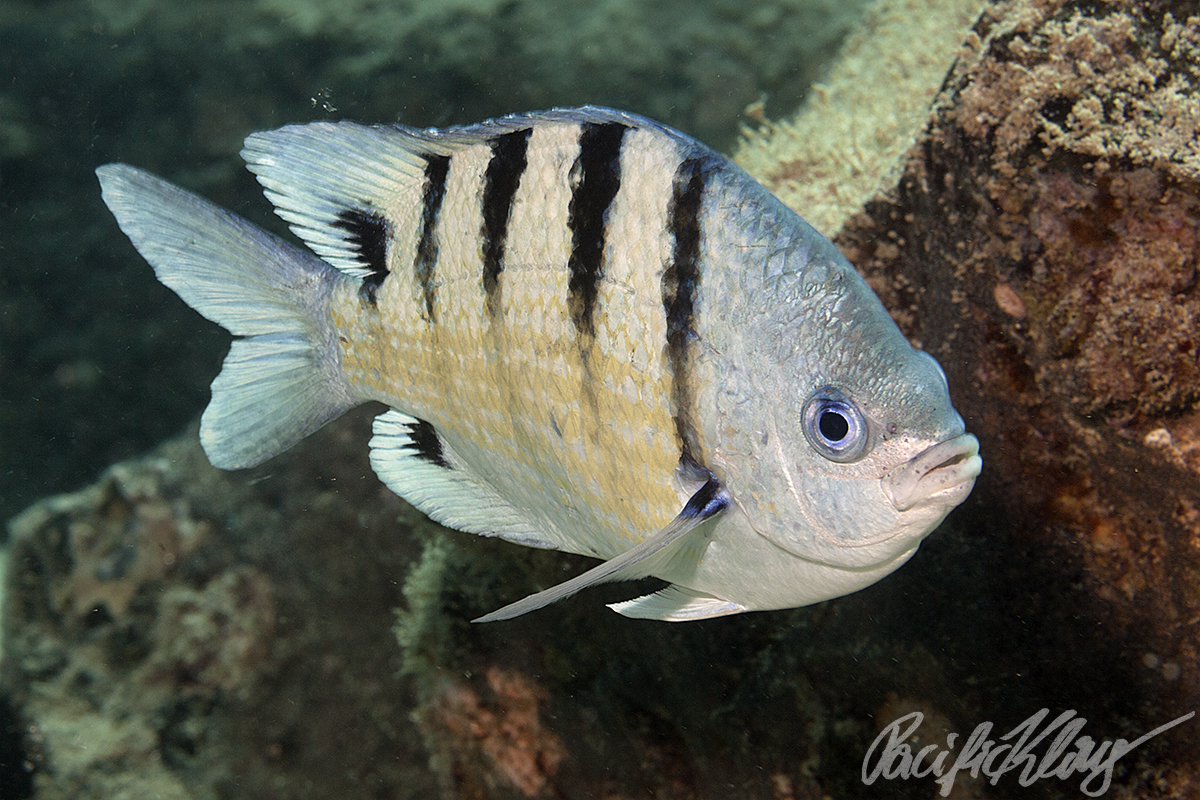
But, the balance of power changed sometime after the middle of the last century, when human scuba divers appeared underwater. That’s when scuba technology first became available to the general public; and especially in Hawaii, there is so much to see underwater! Humans became regulars on the reef.
Now, the Sergeants didn’t particularly like that. They are medium-sized fishes, about the size of a man’s hand, and they are afraid of us much larger humans. When a diver approaches one of their rock-nests, the damselfish flee. Divers usually don’t attack or catch the Sergeants – but they don’t understand that. But other fishes do.
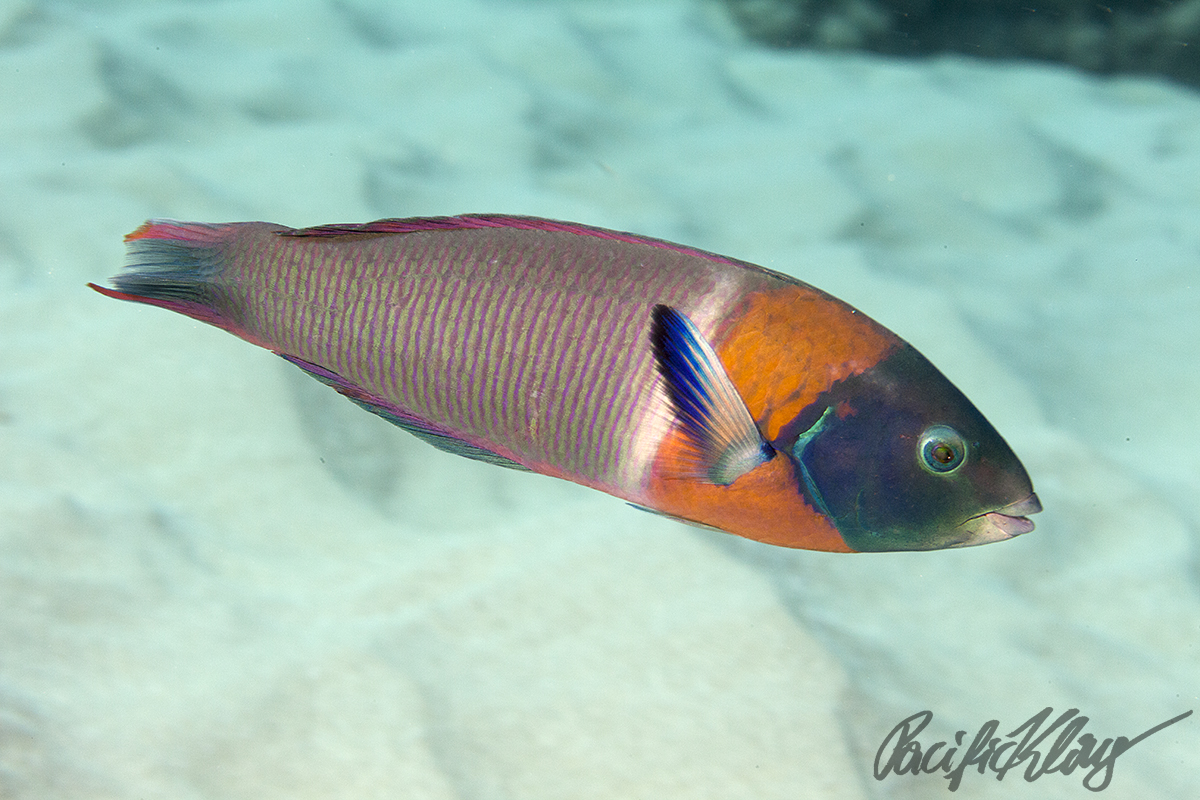
One thing I have learned in the more than thousand dives I have had the chance of doing is that fish are not stupid. Or, rather, some fish are not stupid. Very stupid are the eels and the frogfish. They don’t seem to comprehend much what is going on around them. The damselfishes are in-between intelligence-wise. Some of the smartest fishes are, in my fishwatcher’s opinion, the pufferfishes, butterflyfishes and wrasses. The latter two fish groups also have a healthy appetite for damselfish eggs. And they, in contrast to the egg-guarding Hawaiian Sergeants, understand that divers are weird and clumsy, but not dangerous. So, hence, if one of these divers scares away the Sergeants, the butterflyfishes and wrasses engage in a damselfish-egg feeding frenzy. And this is quite a spectactle!
The butterflyfishes and wrasses know that the damselfish will be back defending their eggs as soon as the divers leave; and they waste no time in devouring as many of the high-protein eggs as possible in the short time they have. Once the diver is gone, a few aggressive passes of the Sergeants are usually enough to clear the rock-nest of intruders again.
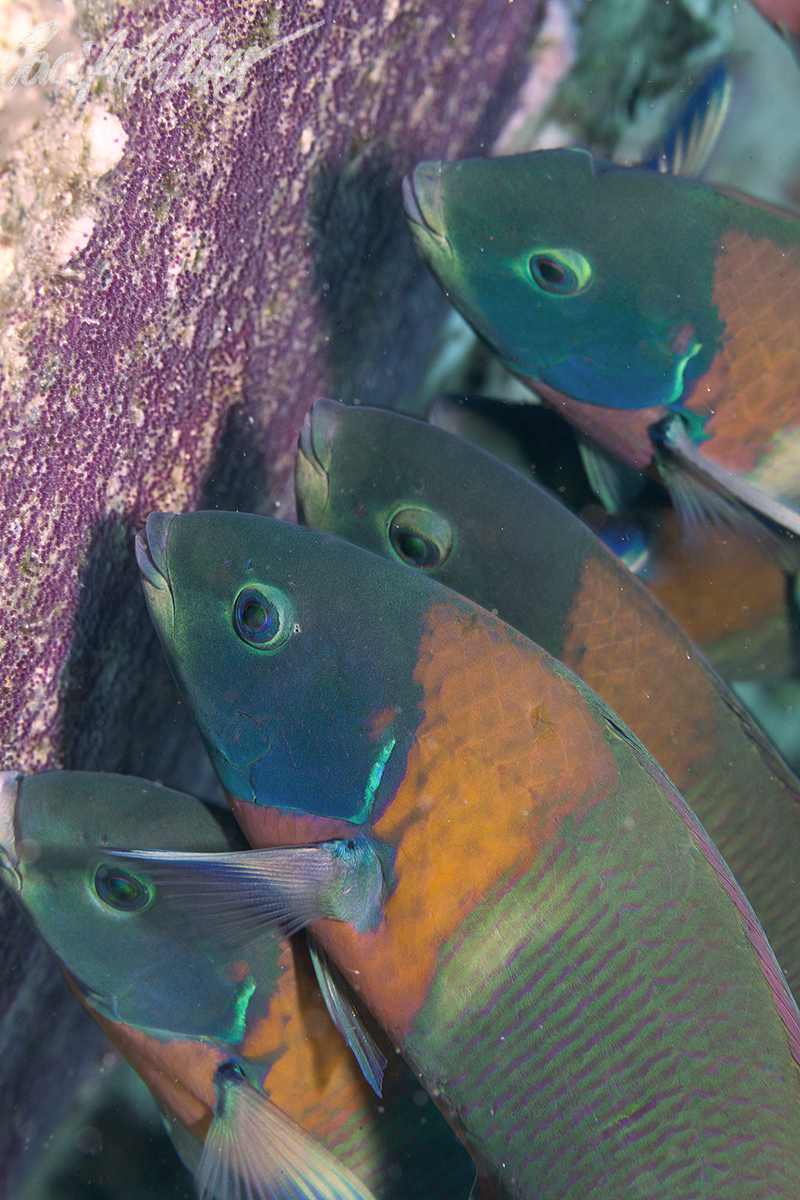
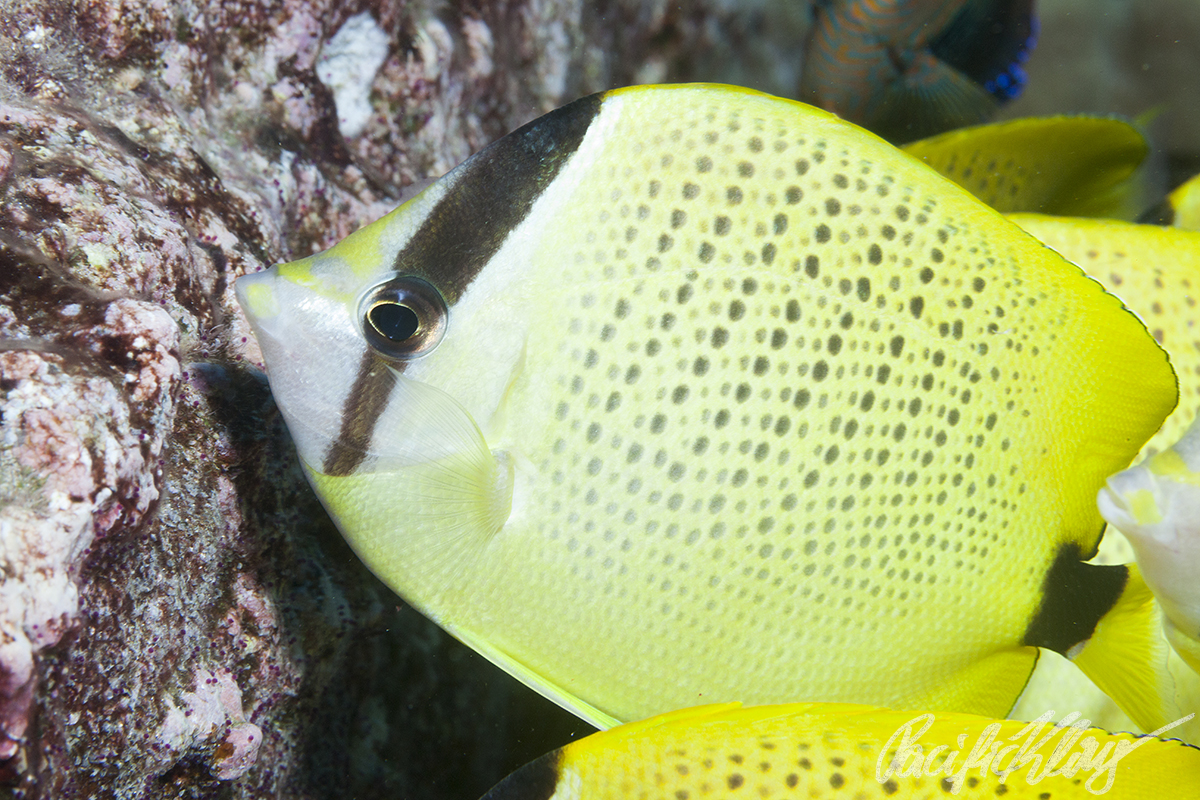
The butterflyfishes and wrasses I observed doing this at two separate dive sites were the spreckeld butterflyfish (Chaetodon citrinellus) and the Hawaiian saddle wrasses (Thalassoma duperrey). These bright fishes have understood that divers are a source of egg lunches, and they followed me around when I was in the wider vicinity of the damselfish nests. I think it’s not simpleminded anthropomorphizing when I say that they were truly curious. Especially the butterflyfish often came up to my mask, looked at me from different angles, and checked out my hair, too. Amazing fish!
Now, isn’t that kind of mean to disturb the damselfish’s nest-guarding just to observe the butterflyfish & wrasse action? It is, a little bit. But the Hawaiian Sergeant is neither rare nor endangered, the ocean off the Hawaiian islands is actually full of them. I try to disturb them only for a few seconds each time – like that, most of the eggs remain uneaten. The whole action is incredible to watch.
